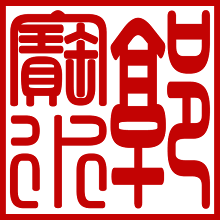1. Cara menghambat:
suara plosif:
rapatkan bibir kita, lalu keluarin. Cth: “b,p,d,t,g,k”.
suara
desis: ada celah di mulut, lalu keluarkan. Cth: “f,h,x,sh,r,s”.
suara plosif
desah: rapatkan bibir kita, buat celah, lalu keluarkan. Cth: “j,q,zh,ch,z,c”.
suara
hidung: mulut tertutup, hidung dibuka. Cth: “m,n”.
suara
lateral: ujung lidah diangkat, mulut melebar. Cth: “l”.
2. pita suara bergetar atau tidak:
Suara gema:
waktu bersuara, pita suara bergetar. Cth: “m,n,l,r”.
Suara jernih:
pita suara tidak bergetar. Selain suara gema, semuanya adalah termasuk suara
jernih.
3. kuat lemahnya nafas:
Suara aspirasi:
waktu mengeluarkan suara, hembusan nafasnya kuat. Cth: “p,t,k,q,ch,c”.
Suara non aspriasi: waktu
mengeluarkan suara hembusan nafasnya lemah atau nyaris tidak ada. Cth: “b,d,g,j,zh,z”.
1. impede method:
Plosive sound:
first button our lips and then let it burst. Ex: “b,p,d,t,g,k”.
Assibilant
sound: leave a gap in mouth, then squeeze out. Ex: “f,h,x,sh,r,s”.
Plosive with
assibilant sound: first button our lips, leave a gap and then squeeze out. Ex: “j,q,zh,ch,z,c”.
Nasal sound:
button our lips and then open our nose. Ex: “m,n”.
Lateral sound:
ris
e our tongue tip and then spread our lips. Ex: “l”.
e our tongue tip and then spread our lips. Ex: “l”.
Resonance sound:
vocal cords vibrate. Ex: “m,n,l,r”.
Clear sound:
vocal cords not vibrate. Except the resonance sound, the other is the clear
sound.
3. the strength of the breath:
Aspirated sound:
at pronunciation will use a strong breath. Ex: “p,t,k,q,ch,c”.
Unaspirated sound: at
pronunciation will use a weak breath or almost nil. Ex: “b,d,g,j,zh,z”.
1. 阻碍的方式:
塞音【sè yīn】 :先闭嘴,后冲破。如:“b、p、d、t、g、k”。
擦音【cā yīn】 :留缝隙,挤出来。如:“f、h、x、sh、r、s”。
赛擦音【sè cā
yīn】 :先闭嘴,后留缝,再挤出。如:“j、q、zh、ch、z、c”。
鼻音【bí yīn】 :口闭合,鼻打开。如:“m、n”。
边音【biān
yīn】 :舌尖起,两边走。如:“l”。
2. 声带是否震动:
浊音【zhuó
yīn】 :发音时声带颤动。如:“m、n、l、r”。
清音【qīng
yīn】 :发音时声带不颤动。浊音意外的其余都是清音。
3. 气流的强弱:
送气音【sòng
qì yīn】 :发音时气流相对较强。如:“p、t、k、q、ch、c”。
不送气音【bù sòng qì yīn】:发音时气流相对较弱。如:“b、d、g、j、zh、z”。

No comments:
Post a Comment
Just feel free to comment or ask anything my friend.
help us to improve this blog for the benefit of anyone who want to learn Chinese.
i`ll always try the best to answer or reply your comment as soon as possible ^.^